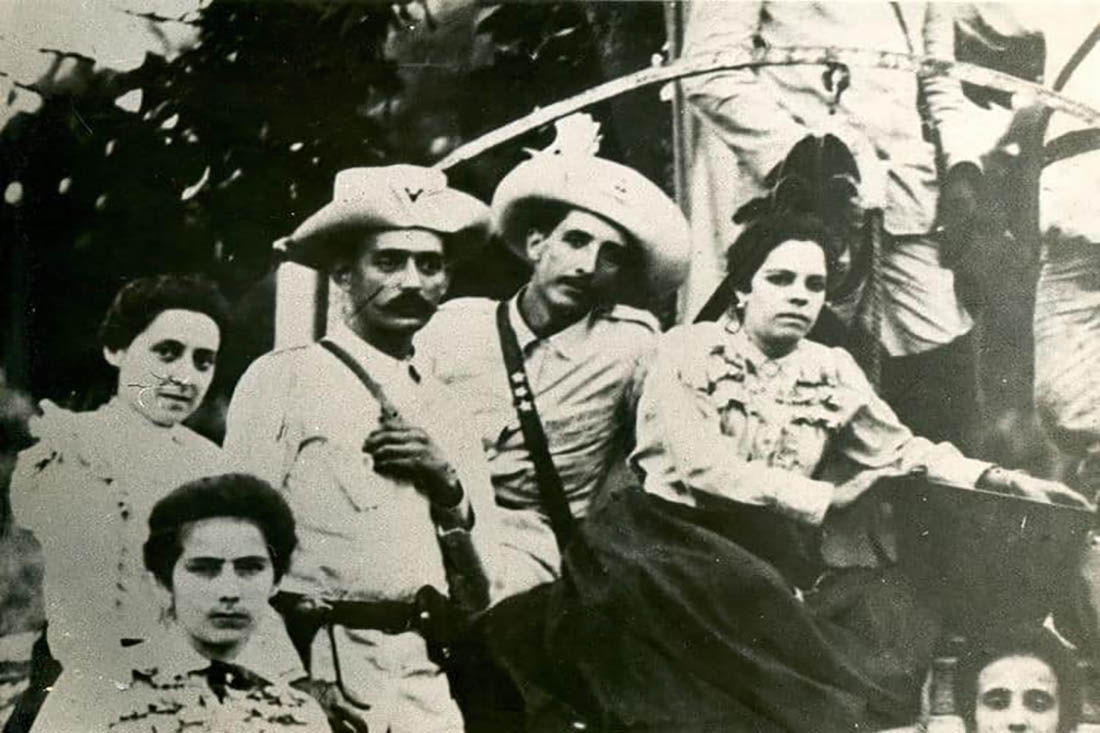Women in the patriotic vanguard
Long-standing in the conspiracy of Rayos y Soles de Bolívar for the independence of the Greater Antilles was the ordinary mayor Lic. Manuel de Jesús Arango y Ramírez. His wife was Ana Isabel Agüero y Perdomo, as a result, the sister of Joaquín de Agüero y Agüero’s wife, Ana Josefa Agüero y Perdomo; by the way, from whose mother the second Count of Villamar Hernández Perdomo came, who was followed in kinship by Francisco Perdomo y Batista, one of the first fallen for Cuban freedom, in San Francisco del Jucaral, on July 4th, 1851.
He was the brother of Manuel de Jesús Arango, José Agustín Arango y Ramírez, who went to Bolívar to request support for Cuban independence while he would fight on Venezuelan lands under his orders.
The mothers and wives of the Arangos knew about all this, and like other mothers and wives of patriots who conspired in the Sociedad Libertadora de Puerto Príncipe, created in 1849, they were being watched by the Spanish authorities. Shortly before, exactly in 1847, in the building that El Liceo occupied in the Plaza de Armas, several of its young members unleashed a scuffle against the Spanish soldiers and police agents.
The last names would stand out immediately: Agüero, Mora, Recio, Cisneros, Arango… The alarm reached their homes and in them, once the events were known, they were protected by mothers, wives and other women, around 14 Agüero.
By the way, when Joaquín de Agüero was in Nuevitas and later in the town of Guáimaro, while he was carrying out revolutionary work among acquaintances and identified with his libertarian ideas, the colonial authorities subjected wives and other women who provided their support to Agüero and his followers the same surveillance treatment. Then came the uprising in arms and the Declaration of Independence, on July 4th, 1851.
Ana Josefa Agüero y Perdomo
This principeña wife of Joaquín de Agüero, who was among the founders of the Sociedad Libertadora de Puerto Príncipe and led the anti-colonial insurrection in July 1851, had more followers.
The patriotic commitment to love could not fail to accompany from its preliminary steps for Cuban freedom. And most importantly, brave woman, there is no doubt that she was, she would be capable of attracting countless females for the same political budgets and purposes of the insurrection.
In her letters to Agüero, already up in arms, the understanding of his fighting objectives is noted and to support him in the “ardent desire for freedom for his homeland.” For more, she would come to express to him: «who had the happiness of being there at that supreme moment! With what pleasure would I shake the hands of each one of those warlords in my hands, with what love would I hold you close to my heart, telling you: until you sing victory on earth or enjoy glory in heaven!»
At the same time, in the letter written by her on July 2nd of that year, she announces to her “soldier” what is related to the “flag of our country (…) that with unspeakable pleasure I worked on it yesterday.” Which meant the greatest commitment to the homeland. That is to say, Ana Josefa was not behind Agüero or with secondary merit before history, but occupying a position at the forefront of her husband’s libertarian insurrectionary project.
It should be remembered that, in the Revolutionary Meeting held in Las Tunas, on June 13th, with all those involved from that region present, someone argued that the wife of Franklin, Agüero’s pseudonym, that his wife and other women from Camagüey donated 5 thousand pesos for the outbreak of the insurrection. So that was possible to start the insurrection with that sum and some weapons.
Surely for this and other political reasons her house was being searched by the Spanish authorities when it was learned that on that date that house was being heavily frequented by several local girls. They wasted no time: they made Cuban cockades to wear on their shoulders or around their shirt collars, bandages to help the wounded, and the tricolor flag with a triangle and star that Agüero would raise.
In addition, the cousin of the spouses, the young romantic Martina Pierra y Agüero, improvised and signed a sonnet to be recited when placing the flag of the country in the hands of the leader. What would go awry due to the capture by a Spanish squad of her cousin Joaquín de Agüero y Sánchez-Pereira, for going into the field of insurrection ahead of schedule.
It should be noted that the Cuban flag made by Ana Josefa Agüero remained hidden for its subsequent transfer to her husband in one of the churches of Camagüey and where dozens of devoted women, relatives of the plotters, had to congregate to “ask the Almighty to transmit to the hearts of all Cubans an ardent desire to liberate their homeland and at the same time give them courage and virtues to achieve it”.
So the women, defying the emboldened Spanish military with orders to violently abort any hint of insurrection, had the courage to respond to Ana Josefa’s call.
For all that, the prelate Antonio María Claret was not without reason when, in a letter to the Captain General of Cuba, José Gutiérrez de la Concha, expressed: “[…] this insurrection (…) has been more the work of women than of men.”
Translated by: Aileen Álvarez García






